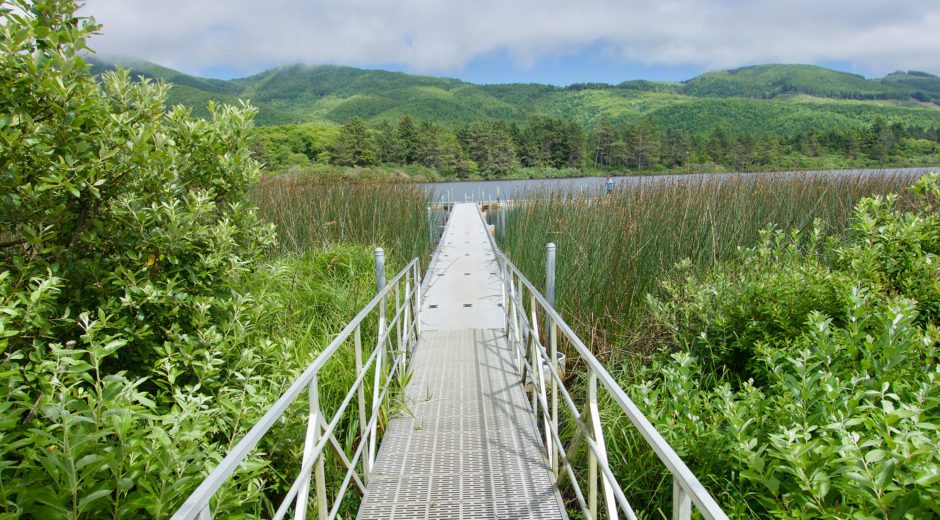Though rushing rivers and the wild ocean waves make for exciting fishing, sometimes you just want to cast a line, sit back, and enjoy the peaceful calm of a beautiful lake. Either from the shore or dock, lake fishing is a tradition for many North Coast families, and is a great way to introduce kids to angling and the respect for our public lands. Common fish are rainbow trout, largemouth bass, crappie, and sometimes winter steelhead.
The Oregon Department of Fish and Wildlife publishes a handy guide to lake fishing in Oregon, including the North Coast region, including safety tips, and information about species and stocking schedules. The site also has current regulations and required fishing license information, and has excellent pointers on how to clean and freeze your catch.
Clatsop County Highlights
In Clatsop County, families can enjoy a number of lakes for fishing, including Coffenbury Lake, a pleasant 50-acre lake in Fort Stevens State Park in Warrenton. The lake has a boat ramp and docks to provide ADA-accessible fishing, and plenty of parking. Pro tip: Large steelhead are stocked in winter.
Nearby Cullaby Lake, which lies about four miles north of Gearhart, covers 220 acres and has two boat launches and docks for easy fishing access. Pro tip: an excellent bass lake, so bring your boat to launch from Cullaby County Park in summer.
Tillamook County Highlights
Rockaway Beach’s popular Lake Lytle is a pleasant, scenic 65-acre lake with easy access from the highway, and a nice break from the ocean beach and summer crowds in town. Parking is alongside Highway 101. Pro tip: Angle for rainbow trout from the ADA-accessible dock.
Fish for rainbow trout from the bank or several fishing platforms at quiet 3-acre Hebo Lake, located in the Siuslaw National Forest east of Pacific City. Pro tip: Bring a small raft, float tube or canoe to launch from the bank.
Sandwiched between Tillamook Bay and the ocean, Cape Meares Lake is especially popular for rainbow trout stocked in spring and fall. Protip: The banks can get choked with vegetation in summer months, so bring your kayak — or better yet, learn from an expert on a guided kayak tour.

